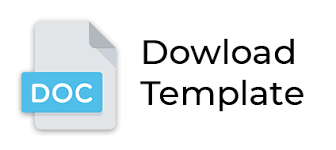Cytopathology Lymphadenopathy Feature in HIV Positve Patient: Diagnosis Tools Comorbidities
DOI:
https://doi.org/10.28932/jmh.v1i3.517Abstract
Lymphadenopathy is enlarged lymph nodes caused by infection, inflammation or malignancy. On HIV positive patients, lymphadenopathy is one of the most common clinical manifestations and it is usually persistent. Fine-needle aspiration biopsy (FNAB) is an effective cytology technique in determining the diagnosis of lymphadenopathy. This study aimed to describe the cytopathology of lymphadenopathy in HIV positive patients. This is a descriptive study of 21 cases of lymphadenopathy in patients with HIV positive who underwent FNAB examination in Anatomical Pathology Department of Dr.Hasan Sadikin Hospital between 2013-2014. Medical data was taken from the patient medical records including age, sex, location, size and cytopathological diagnosis. Cytopathology overview of FNAB specimens were reassessed by 2 pathologists. In this study, lymphadenopathy in HIV positive patients were mainly found in men (n = 15.71%) with an average age between 20-30 years. The most frequent location was the neck (n = 20.95.2%). The lymph nodes size were found between 0.5-3 cm. Most diagnosis was tuberculous lymphadenitis (n = 15.71%) with the most common cytology feature was granulomatous lymphadenitis (n = 5.33.3%) and suppurative lymphadenitis (n = 5.33.3%). FNAB examination in lymphadenopathy is very helpful to identify the cause of infection in HIV positive patients. Keywords: FNAB, HIV, lymphadenopathy, cytopathologyDownloads
Download data is not yet available.
Downloads
Published
2016-02-28
How to Cite
1.
Agustina H, Wisudarma Y, Kristiana R, Hernowo BS. Cytopathology Lymphadenopathy Feature in HIV Positve Patient: Diagnosis Tools Comorbidities. J. Med. Health [Internet]. 2016Feb.28 [cited 2025Jan.18];1(3). Available from: http://224305.koshikahk.tech/index.php/jmh/article/view/517
Issue
Section
Articles
License
Authors who publish with this journal agree to the following terms:
- Authors retain the copyright and grant the journal right of first publication with the work
simultaneously licensed under a Creative Commons Attribution-NonCommercial 4.0 International License that allows others to share the work with an acknowledgement of the work's authorship and initial publication in this journal. - Authors are able to enter into separate, additional contractual arrangements for the nonexclusive distribution of the journal's published version of the work (e.g., post it to an institutional repository or publish it in a book), with an acknowledgement of its initial publication in this journal.
 This work is licensed under a Creative Commons Attribution-NonCommercial 4.0 International License.
This work is licensed under a Creative Commons Attribution-NonCommercial 4.0 International License.

















